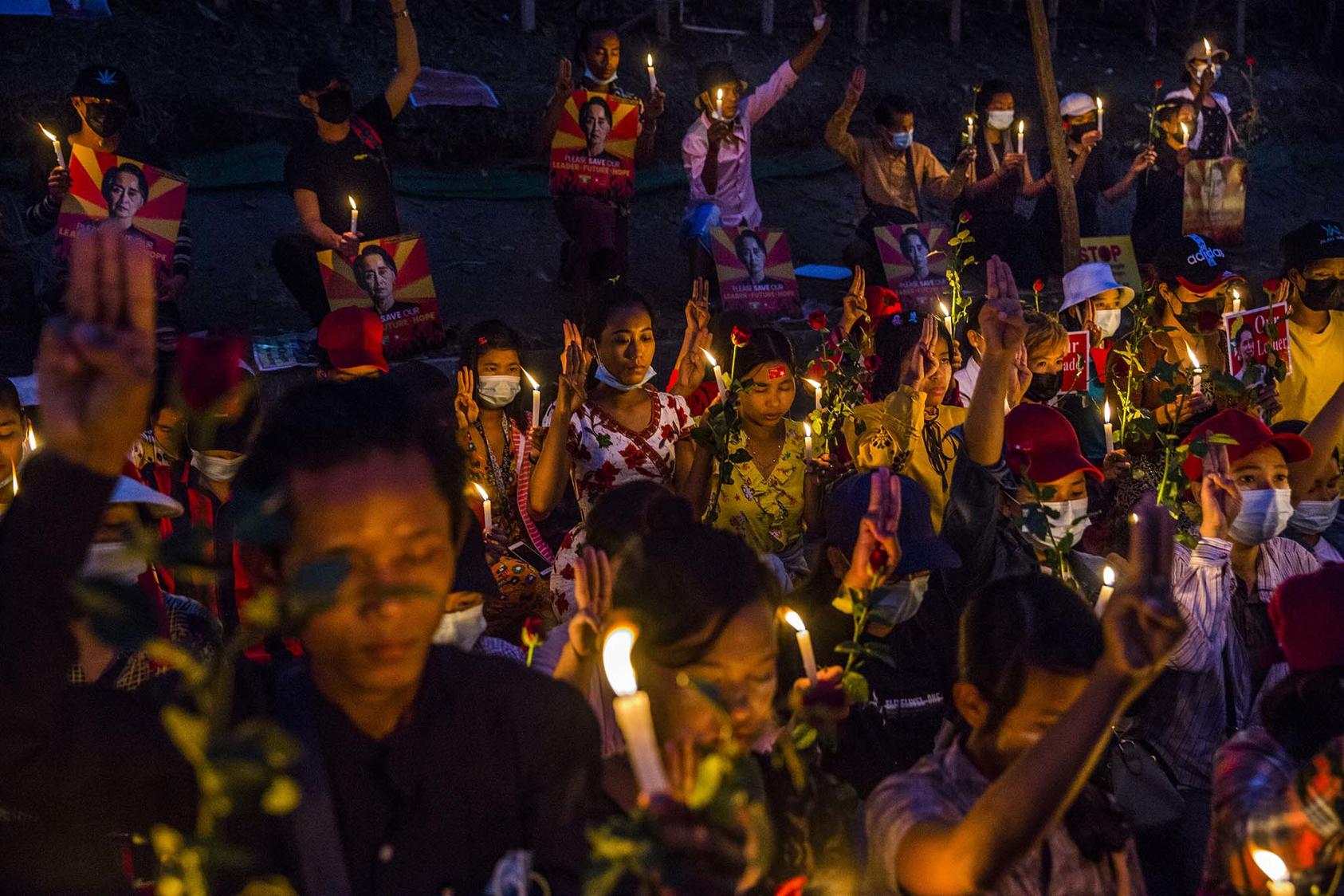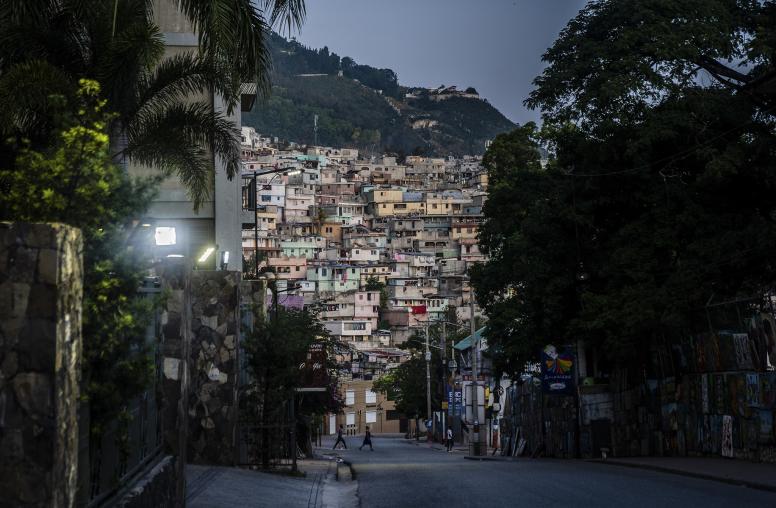New Evidence: To Build Peace, Include Women from the Start
Peacemaking often begins with just a few in the room. For success, women need to be there.
In the 20 years since governments declared it imperative to include women’s groups and their demands in peace processes, experience and research continue to show that this principle strengthens peace agreements and helps prevent wars from re-igniting. Yet our inclusion of women has been incomplete and, in some ways, poorly informed. Now a study of recent peace processes in Colombia, Mali, Afghanistan and Myanmar offers new guidance on how to shape women’s roles. A critical lesson is that we must ensure this inclusion from the start.

Historically, peace negotiations have been the business of governments, elites—and men. Even as wars have shifted—from clashes between states to the proliferation of civil wars—peacemaking has remained an elite bargain among a few representatives of the combatant forces. Large swaths of society remain excluded.
Yet up to 50 percent of peace agreements break down within five years—evidence that enduring peace requires more than a pact negotiated among elites. Sustainable peace processes must reflect the interests of the population at large, notably by redressing the political, social and economic exclusion of communities, which remains the prevailing driver of conflicts.
Incremental Inclusion: A False Promise
The single largest excluded community, and resource, in peace processes is women. Peacemaking, led by men, too often reduces women to their experiences as victims of violence, sidelining even those women who played an active part in the conflict. Many scholars and activists now urge that we replace this image of women as only passive victims, mothers and caregivers with a more nuanced picture of the ways in which women participate in and are affected by conflicts.
Mediators and others involved in peace processes argue that including the voices of all societal groups, including women, at the main negotiation table is unrealistic and inefficient. It complicates already complex negotiations, not least by challenging the interests of powerful leaders of the combatant forces. This problem leads to a logic of “incremental inclusion,” in which most current peace processes start with informal, exploratory (and often secret) talks among a few representatives of the primary belligerents. At a later stage, talks become formal and thematically broader. More participants are brought to the table, especially if their contributions are deemed essential for a successful agreement. Finally, to implement signed agreements, larger segments of society are invited to help design structural reforms and reconciliation mechanisms through constituent assemblies, national conferences or commissions.
In practice this pattern relegates most civil society groups—including women—to a status as spectators of a political settlement allegedly negotiated in their name. They are given a chance to express their views only through informal consultation forums, petitions, public surveys, validation referendums, post-agreement elections, or nonviolent actions such as street protests. Women’s groups are included, if at all, much too late to meaningfully influence the content and pace of state reforms.
For the difficulties of timing and sequencing this broadening of inclusion, research and practice have made progress in identifying who should be involved and how inclusion can be implemented. But we still know little about when such inclusion should happen.
A research project conducted by the Berghof Foundation with a grant from USIP examined the incremental inclusion of civil society and non-signatory armed groups in four peace deals or cease-fire agreements signed in 2015-2016. The evidence—from Colombia, Mali, Afghanistan and Myanmar—shows that a progressive inclusion of women’s groups often does not work. It fails to adequately address their interests or translate their aspirations into constructive contributions to the peace process or the post-war society. For this to happen, women must be included from the start.
Women Boost Public Support for Peace Processes
The Colombia experience shows that women’s participation in the early agenda-setting stages of a peace process can let them ensure a continued gender-inclusive approach in the later stages of formally negotiating and implementing an accord. Women’s contributions in public forums held across Colombia during the agenda-setting phase of the peace process helped to build popular trust and a sense of legitimacy around the negotiations. These inputs also helped prepare the ground for the government and FARC guerrillas to invite civil society delegations to Havana during the formal talks—an illustration of the power of an early precedent to influence later developments.
The most effective mechanism for inclusive participation in the Havana talks was a gender sub-commission created by the Colombian government and the FARC rebel movement. The sub-commission managed to include gender-sensitive language and measures throughout the peace agreement. It facilitated dialogue with social movements representing women displaced by violence, women farmers, representatives of Afro-Colombian and indigenous women, and LGBTI activists. As a result, the agreement pays particular attention to the rights of women and other historically marginalized communities, and is described by disparate peacebuilding and women’s rights specialists as the most inclusive peace agreement in history.
Unfortunately, peace processes typically exclude societal groups from early negotiations. Such groups then show little stake in the negotiation process and are more likely to actively resist the implementation of an eventual agreement. This was the case among Malians during the negotiation of the 2015 Algiers Accord between Mali’s government and two coalitions of armed groups from the country’s north.
Under pressure from international mediators to speed up negotiations and conclude an agreement, neither the negotiation parties nor the primary mediators (first Burkina Faso, then Algeria) favored broadening participation at the table. Women’s rights groups were excluded from the early cease-fire talks and played no meaningful roles during the negotiations, where armed belligerency was the sole criterion for meaningful inclusion. Although negotiators selected and invited a few women to the formal talks in Algiers as part of civil society delegations, a youth activist interviewed for the research said she felt that she served only as a “stage” to legitimize the process, and that “not a single comma in the text of the agreement was adapted on the basis of civil society contributions.” The exclusion of women and broad parts of society resulted in mass-based popular resistance against the accord in the capital, Bamako, and surrounding regions. That resistance has impeded the accord’s implementation and contributed to Mali’s August 2020 military coup.
Women’s Early Roles Help Peace Accords’ Implementation
In Colombia, women hold leadership roles in various thematic commissions set up to implement the Havana agreement. In the other peace processes, by contrast, the delayed inclusion of women and other marginalized groups has impeded their influence in the implementation of an agreement they did not take part in negotiating. If women are permitted no genuine part in negotiating and drafting an agreement, their role in implementing it often remains unspecified, thus hindering any gradual broadening of inclusion at a later stage.
This phenomenon is visible in Afghanistan. The 2016 agreement between the Afghan government and the rebel group Hezb-i-Islami was blatantly exclusionary of women’s interests and gender rights. It contains merely a rhetorical commitment to protect the “rights and privileges of every Afghan citizen, both women and men.” However, with no specific provisions to legally substantiate these principles and no mechanisms for broader participation during the implementation stage, it was obvious that they would not advance rights for Afghan women. The same pattern applied in Mali, where the sidelining of women from civil society throughout the negotiation was reproduced in the post-agreement follow-up mechanisms, leading to protests by women’s organizations against their limited representation in the peace implementation process.
Lessons for Current Peace Processes
To guarantee effective inclusion of women’s groups, mediators need to ensure women’s early participation in agenda-setting arenas, which greatly enhances their influence during formal negotiations. Mediators must ensure that the peace accords specify how, and in which bodies, women representatives will be included in the implementation phase. These procedures can amplify the diplomatic, technical and financial support often offered by international actors to promote women’s meaningful participation in peace processes.
Women across Myanmar (Burma) have taken center stage in the popular nonviolent resistance to the February 2021 military coup against an elected civilian government. Whatever the outcome of the current struggle, Myanmar’s peace process will ultimately need to be redesigned to take account the demonstrated agency of women activists. Neither the state, political parties nor the ethnic armed organizations will be able to sideline women as in the past. These elites will have to include women in political dialogue, for example through representative quotas and dedicated contributions in thematic commissions.
Colombia shows the efficacy of inviting women’s rights activists to pre-negotiation and agenda-setting talks. Women then have a much bigger chance of framing debates and agendas and socializing the negotiators from warring parties to the concerns of their constituencies. These lessons are vital for the peace process in Afghanistan, where women will be critical allies in implementing an eventual agreement. The design of the pre-negotiation phase has given reason to hope that the current process with the Taliban will not be as exclusive as that with Hezb-i-Islami. When a delegation from the Afghan government and society sat with Taliban representatives in July 2019 to discuss the shape of a peace process, that delegation was almost 25 percent women. Only this early inclusion, combined with the enormous efforts by the Afghan Women’s Network—the mobilizing and training of Afghan women across civil society—provides hope that Afghan women might yet be permitted a meaningful participation, and that their rights are not traded for an imagined chance at bringing a quick end to the conflict.
Véronique Dudouet and Andreas Schädel are advisors at the Berlin-based Berghof Foundation. This article is drawn from research funded in 2019-2020 by a USIP grant. The full research report, and a briefing for policymakers in English, Spanish, French and Burmese, are available at the Berghof Foundation website:
- Research report. Incremental inclusivity: A recipe for effective peace processes?
- Policy Brief. Incremental inclusivity in peace processes: Key lessons learnt


